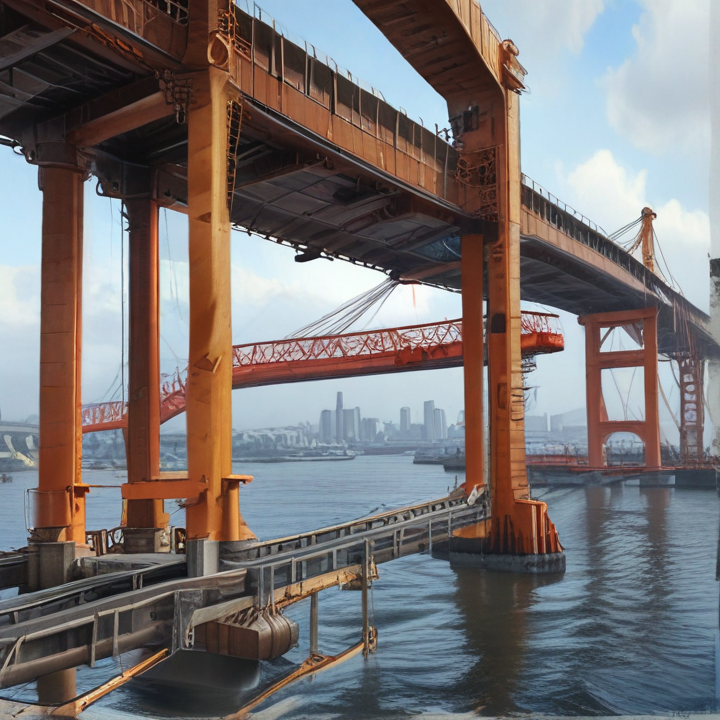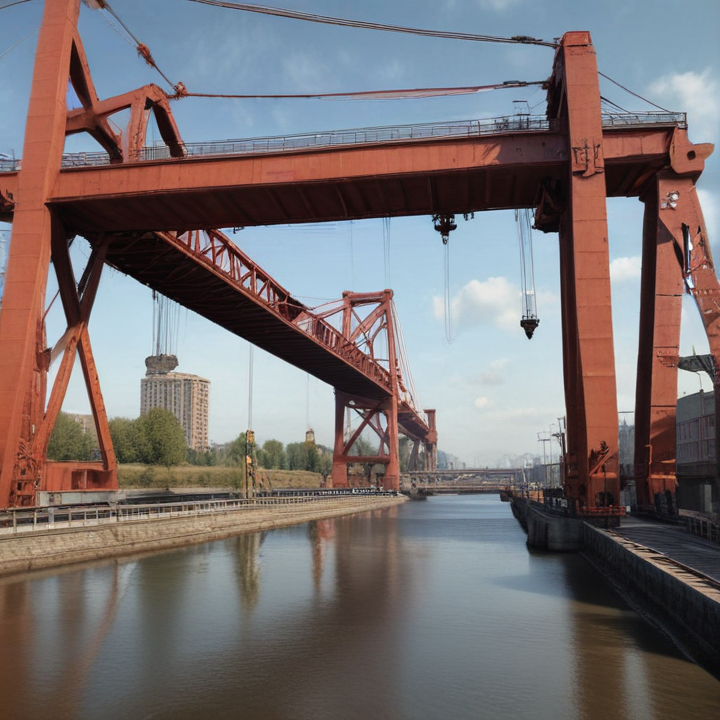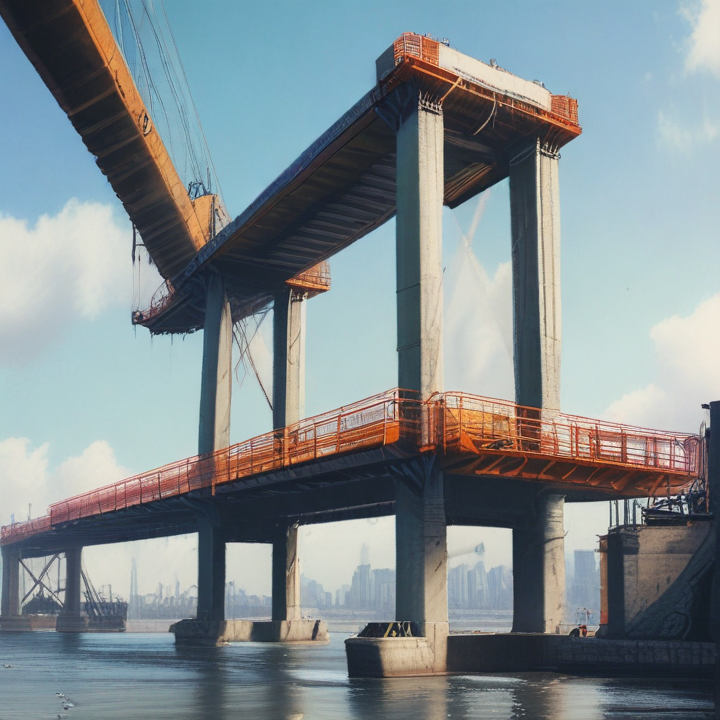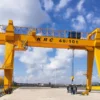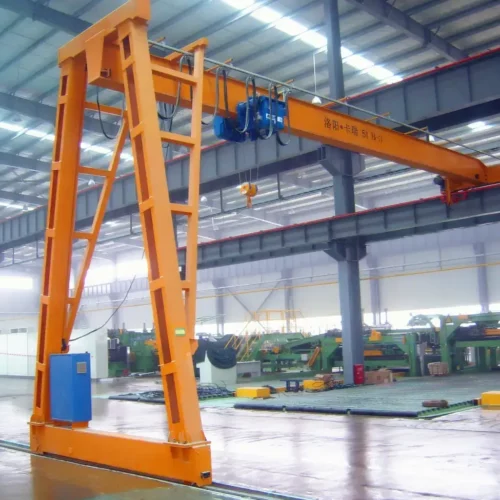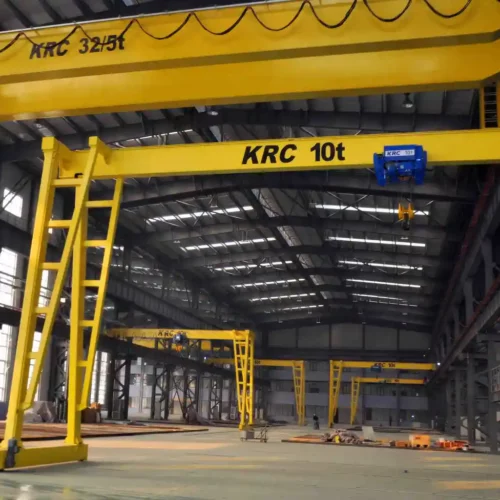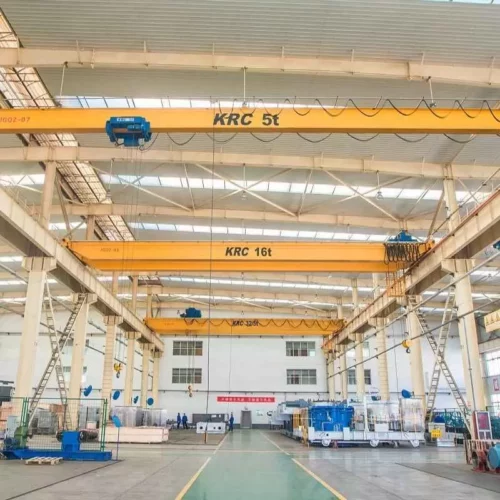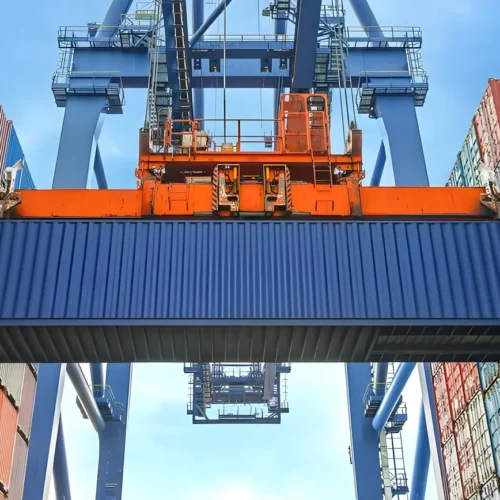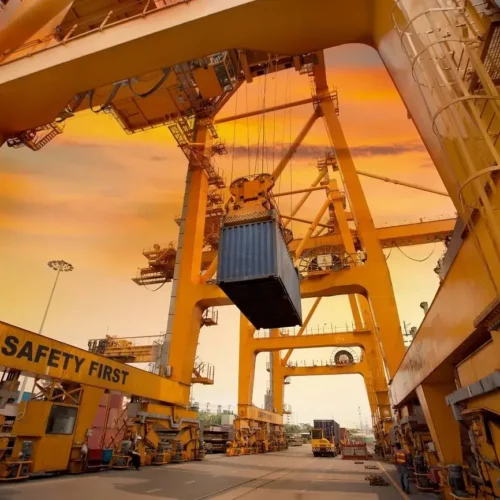bridge and gantry crane Safety Certifications
To ensure safe operation, bridge and gantry cranes must adhere to stringent safety standards and certifications. Here are key certifications and their significance:
1. OSHA (Occupational Safety and Health Administration):
– In the United States, OSHA standards (29 CFR 1910.179 for overhead and gantry cranes) mandate specific requirements for crane operation, inspection, and maintenance to ensure workplace safety.
2. ASME (American Society of Mechanical Engineers):
– ASME B30 series, particularly ASME B30.2 (for overhead and gantry cranes), outlines safety guidelines on construction, installation, operation, inspection, and testing criteria to mitigate risks in crane operations.
3. CMAA (Crane Manufacturers Association of America):
– The CMAA Specification No. 70 and No. 74 provide detailed guidelines on mechanical and electrical components of bridge and gantry cranes. They ensure manufacturers comply with industry best practices for durability and safety.
4. ISO (International Organization for Standardization):
– ISO 9927 (Cranes – Inspections) and ISO 23815 (Cranes – Competency requirements for crane inspectors) offer internationally recognized standards for inspection protocols and personnel qualifications, promoting global safety standards.
5. EN (European Norms) Standards:
– EN 15011 covers European safety requirements for bridge and gantry cranes, including design, operation, and maintenance, ensuring equipment meets stringent EU safety directives.
6. ANSI (American National Standards Institute):
– ANSI/ASSP B30.16 provides safety standards for operating, maintaining, and inspecting crane systems, further supporting rigorous safety measures across crane operations.
Certifications from these organizations ensure that bridge and gantry cranes are safe, reliable, and compliant with national and international safety standards, significantly reducing the risk of accidents and enhancing operational efficiency. Regular training, adherence to these standards, and routine inspections are vital in maintaining a safe working environment.
List Reference Technical Parameters of “bridge and gantry crane”
Bridge and gantry cranes are essential lifting equipment widely used in various industrial applications. Below are the key technical parameters to consider:
1. Load Capacity: Maximum weight the crane can lift, typically measured in tons (e.g., 5 tons, 20 tons).
2. Span: Distance between the runways or the length of the bridge for bridge cranes; for gantry cranes, it’s the distance between the support legs.
3. Lifting Height: Maximum vertical distance the hook can be raised from the working level; crucial for indoor facilities with height constraints.
4. Hoist Speed: The speed at which the hoist lifts or lowers the load, typically measured in meters per minute (m/min).
5. Trolley Speed: Speed at which the trolley moves along the bridge, crucial for operational efficiency, also measured in m/min.
6. Bridge/Gantry Travel Speed: Speed at which the entire crane moves along its runways or tracks, also measured in m/min.
7. Duty Class: Classification according to the amount and frequency of use, often based on standards such as FEM/ISO (e.g., Class A1, A2).
8. Power Supply: Voltage and phase required (e.g., 220V/3-phase, 440V/3-phase).
9. Control System: Types of controls available, such as pendant, radio remote control, or cabin control, impacting operational safety and convenience.
10. Lifting Mechanism: Type of hoist used (e.g., wire rope, chain) and mechanical attributes such as gear ratios, which affect performance and maintenance.
11. Safety Features: Essential safety components like overload protection, limit switches, and emergency stop systems.
12. Material Construction: Quality and type of materials used (e.g., high tensile steel), impacting durability and load-bearing capacity.
13. Environmental Parameters: Suitability for specific conditions like indoor, outdoor, corrosive environments, or extreme temperatures.
14. Compliance: Adherence to international standards such as ISO, OSHA for safety, and performance criteria.
Understanding these parameters assists in selecting the right crane to meet specific operational needs efficiently and safely.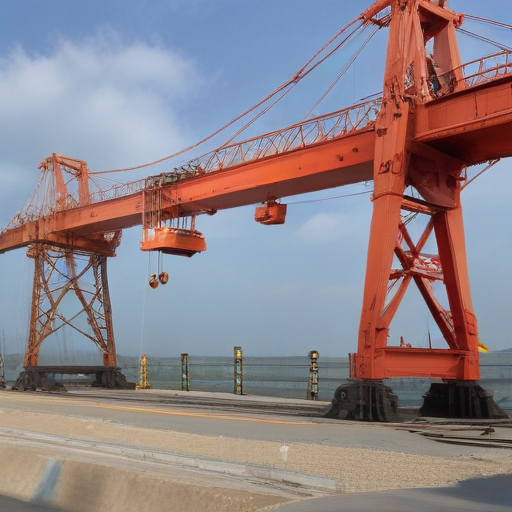
List Product features of “bridge and gantry crane”
Bridge and gantry cranes are essential lifting devices used in various industries for moving heavy loads with precision and efficiency. Here are the key product features:
1. Load Capacity: Can accommodate a wide range of load capacities, from a few tons to several hundred tons, depending on the model and design.
2. Span and Height: Customizable spans and heights to meet specific operational requirements. Bridge cranes have a horizontal bridge that runs between two runway beams, while gantry cranes have legs that support the bridge and can operate indoors or outdoors.
3. Material Construction: Typically made of high-strength steel for durability and robust performance. Corrosion-resistant materials or coatings are used for outdoor or harsh environments.
4. Hoisting Mechanism: Advanced hoisting mechanisms for smooth and precise lifting, including electric or hydraulic winches, with variable lifting speeds.
5. Control Systems: Options for manual, semi-automated, or fully automated controls including remote control operation and integration with smart factory systems.
6. Safety Features: Built-in safety aspects such as overload protection, emergency stop functions, anti-collision systems, and fail-safe brakes to ensure operational safety.
7. Mobility: Gantry cranes can be either fixed or mobile, with wheeled bases for easy relocation. Bridge cranes operate on fixed runways typically mounted on building structures.
8. Versatility: Suitable for a variety of applications including manufacturing, shipping yards, construction sites, and warehouses. Adaptable to different industries like automotive, aerospace, and heavy engineering.
9. Maintenance Accessibility: Designed for easy access to components for routine inspection and maintenance, ensuring minimal downtime and extended service life.
10. Energy Efficiency: Modern cranes incorporate energy-efficient motors and systems to reduce operational costs and support sustainable practices.
These features collectively make bridge and gantry cranes indispensable tools for heavy-duty lifting and material handling in numerous industrial settings.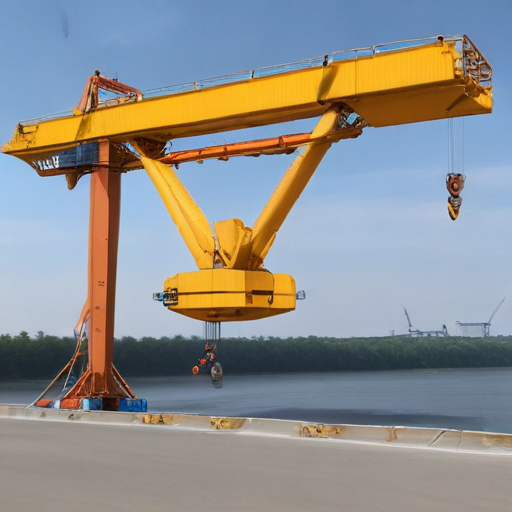
List Application of “bridge and gantry crane”
Applications of Bridge and Gantry Cranes:
1. Manufacturing: Bridge and gantry cranes are integral in manufacturing plants for moving raw materials, assembling large components, and handling heavy products. Industries such as automotive, aerospace, and heavy machinery rely on these cranes for efficient production processes.
2. Construction: In construction, gantry cranes are employed for lifting heavy construction materials such as steel beams, concrete slabs, and pre-fabricated sections. They enhance the safe handling and positioning of materials on the job site.
3. Warehousing and Distribution: Bridge cranes streamline the loading and unloading of goods in warehouses and distribution centers. They facilitate the movement of inventory, enhancing operational efficiency and reducing labor costs.
4. Shipping and Ports: At ports, gantry cranes are essential for loading and unloading shipping containers from vessels. They significantly speed up the process of maritime logistics, contributing to supply chain efficiency.
5. Mining: In the mining industry, bridge cranes are used for transporting extracted ore and other heavy materials. They play a key role in maintaining the flow of operations and ensuring safety in harsh working environments.
6. Railway Yards: Gantry cranes help lift and position heavy rail components, containers, and machinery in railway yards, aiding in the assembly, maintenance, and logistics of railway systems.
7. Steel Mills: Bridge cranes in steel mills handle molten metal, heavy ingots, and large coils. They are designed to withstand extreme temperatures and heavy loads, crucial for the steel manufacturing process.
8. Power Plants: They are utilized for handling heavy equipment and machinery maintenance within power plants. This includes lifting turbines, generators, and other essential components.
Conclusion: Bridge and gantry cranes are versatile tools crucial across various industries for their ability to handle heavy loads efficiently and safely. Their application enhances productivity and safety, making them indispensable in many industrial and commercial sectors.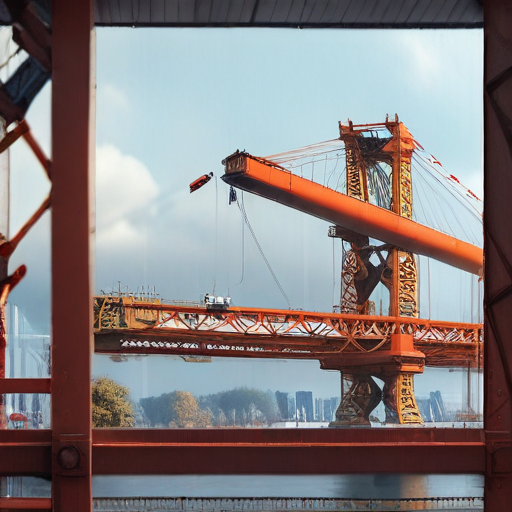
List Various Types of “bridge and gantry crane”
Bridge and gantry cranes are essential lifting devices widely used in industries such as manufacturing, shipping, construction, and warehousing. They come in various types tailored to specific applications and environments. Here’s a concise overview:
1. Single Girder Bridge Crane:
– Features a single beam or girder that supports the trolley and hoist.
– Generally used for light to moderate lifting capacities.
2. Double Girder Bridge Crane:
– Consists of two parallel girders supporting the hoist, allowing for higher load capacities.
– Suitable for heavy-duty applications and higher lifting heights.
3. Underhung Bridge Crane:
– The crane’s end trucks ride on the bottom flange of the runway beams.
– Ideal for facilities with limited headroom.
4. Top Running Bridge Crane:
– The crane’s end trucks travel on rails mounted on top of the runway beams.
– Allows for higher lifting capacities and better floor space utilization.
5. Gantry Crane:
– Characterized by a wheeled frame that supports the entire crane structure.
– Used in outdoor settings or large indoor spaces without runway beams.
6. Portable Gantry Crane:
– Small, mobile gantry cranes ideal for light-duty tasks.
– Easy to move and set up in different locations within the workspace.
7. Adjustable Height Gantry Crane:
– Allows for height adjustment of the gantry, providing flexibility for various lifting tasks.
– Useful for varying load heights in different operational contexts.
8. Semi-Gantry Crane:
– One end of the bridge runs on a runway at an elevated height, while the other end travels on wheels on the floor.
– Combines aspects of both bridge and gantry cranes, suitable for specific industrial layouts.
9. Full Gantry Crane:
– Both ends of the bridge are supported by legs that move on ground-level tracks.
– Common in shipyards, railyards, and large manufacturing plants for heavy lifting tasks.
Each type of crane offers unique advantages that cater to specific operational requirements, ensuring efficient and safe material handling.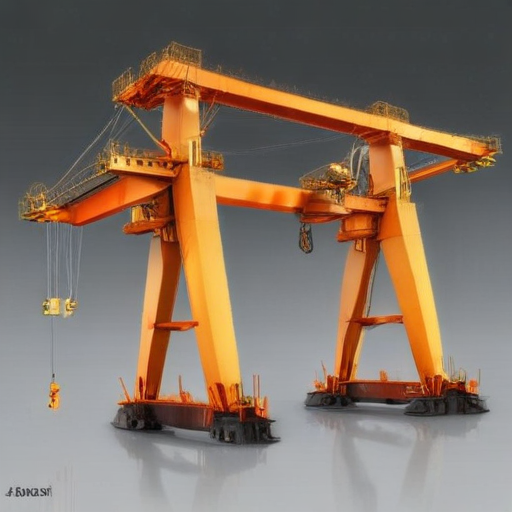
bridge and gantry crane Accessories Upgrades and Custom Manufacturing Options
Bridge and gantry cranes are essential tools in many industrial operations, and their efficiency can be significantly enhanced with the right accessories, upgrades, and custom manufacturing options.
Accessories:
1. Load Indicators and Sensors: Including digital load cells for precise weight measurement.
2. Remote Controls: Wireless control systems for enhanced safety and flexibility.
3. Rotation Locks and Limit Switches: To prevent over-rotation and ensure safe operation.
4. End Carriages and Wheels: Upgraded wheels for smoother travel and durability.
5. Lighting Systems: LED lights for improved visibility during nighttime operations.
6. Special Hooks and Lifting Devices: Such as spreader beams and slings to handle various loads.
Upgrades:
1. Motor and Drive Systems: Upgrading to variable frequency drives (VFDs) for better speed control and energy efficiency.
2. Anti-Sway Systems: To minimize load sway during movement, increasing safety and precision.
3. Automation Packages: Incorporating semi or fully automated control systems for repetitive tasks.
4. Enhanced Safety Features: Such as anti-collision devices, fall protection gear, and improved braking systems.
5. Structural Reinforcements: Strengthening existing crane structures for heavier loads or extended spans.
Custom Manufacturing Options:
1. Tailored Dimensions: Custom lengths and heights to fit specific workspace requirements.
2. Specialized Configurations: Designing cranes for unique applications, such as hazardous environments or cleanrooms.
3. Material Choices: Using higher grade materials like stainless steel or corrosion-resistant alloys for specific operational needs.
4. Advanced Power Systems: Custom power supply options, including battery-operated or hybrid systems for different operational contexts.
5. Integration with Other Systems: Designing cranes to integrate seamlessly with existing logistic and warehousing systems.
With these accessories, upgrades, and custom manufacturing options, bridge and gantry cranes can be optimized to meet the specific needs of any industrial operation, enhancing efficiency, safety, and performance.
List Quality Control and The Manufacturing Process of “bridge and gantry crane”
Quality Control in Bridge and Gantry Crane Manufacturing:
1. Material Inspection:
– Verify steel quality through chemical and mechanical tests.
– Ensure all materials meet industry standards (e.g., ASTM, ISO).
2. Component Verification:
– Inspect welded joints using non-destructive testing (NDT) like ultrasonic or radiographic methods.
– Check precision of machined parts with dimensional inspections.
3. Functional Testing:
– Conduct operational tests on motors, hoisting mechanisms, and control systems.
– Simulate load tests to ensure safety and performance under specified conditions.
4. Compliance and Certification:
– Ensure adherence to safety standards (e.g., ANSI, OSHA).
– Obtain necessary certifications from authorized bodies.
5. Final Inspection and Documentation:
– Review and document final product against design specifications.
– Provide a comprehensive quality report and maintenance guidelines.
Manufacturing Process of Bridge and Gantry Cranes:
1. Design and Planning:
– Develop detailed engineering drawings and specifications.
– Perform structural analysis and load calculations.
2. Material Procurement:
– Source high-quality steel and components from certified suppliers.
– Ensure inventory management aligns with the production schedule.
3. Cutting and Fabrication:
– Cut steel plates and profiles using CNC machines or laser/plasma cutters.
– Assemble components using advanced welding techniques.
4. Machining:
– Machine critical parts like wheels, gears, and shafts with precision tools.
– Perform threading, boring, and grinding as necessary.
5. Assembly:
– Pre-assemble subcomponents (e.g., trolleys, hoist units) in controlled environments.
– Integrate electrical systems, wiring, and control panels.
6. Surface Treatment:
– Sandblast and apply anti-corrosive coatings or paint as specified.
– Inspect coating thickness and adhesion quality.
7. Final Assembly and Testing:
– Assemble the crane components on the final structure.
– Conduct load and safety tests as per design requirements.
8. Shipping and Installation:
– Package components securely for transport.
– Supervise on-site installation and final commissioning, ensuring all parts are functional and safe.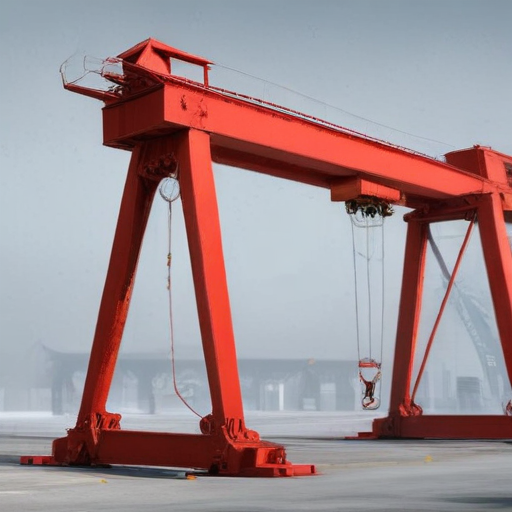
How to use “bridge and gantry crane”
Using a bridge and gantry crane effectively and safely involves several crucial steps. Here’s a simplified guide:
1. Inspection and Preparation:
– Daily Checks: Inspect the crane for any visible damage or wear. Ensure all parts are functional, including brakes, hooks, and hoists.
– Load Calculation: Verify the weight of the load to confirm it is within the crane’s capacity.
2. Setup:
– Positioning: Align the crane directly above the load to avoid side pulls. For a gantry crane, ensure it is on a flat, stable surface.
– Slings and Attachments: Secure the load with appropriate slings or attachments, ensuring they are correctly rated for the weight.
3. Operation:
– Controls Familiarization: Understand all crane controls, including emergency stop functions.
– Lifting:
– Lift the load slowly to confirm stability.
– Avoid sudden movements that could destabilize the load.
– Movement:
– Move the load along the crane’s bridge or gantry smoothly.
– Ensure pathways are clear of obstacles and personnel.
– Positioning: Lower the load gently once at the designated location.
4. Safety Measures:
– Clear Communication: Use standardized hand signals or communication devices to coordinate with team members.
– Awareness: Always stay aware of the load’s position and potential swing.
– Emergency Procedures: Know and be ready to enact the emergency stop or other safety protocols if necessary.
5. Shutdown and Maintenance:
– Post-operation Checks: Inspect the crane for any signs of stress or damage incurred during the operation.
– Regular Maintenance: Follow a maintenance schedule as per the manufacturer’s guidelines to ensure longevity and safety of the crane.
By adhering to these steps, operators can ensure the efficient and safe use of bridge and gantry cranes in lifting and transferring heavy loads.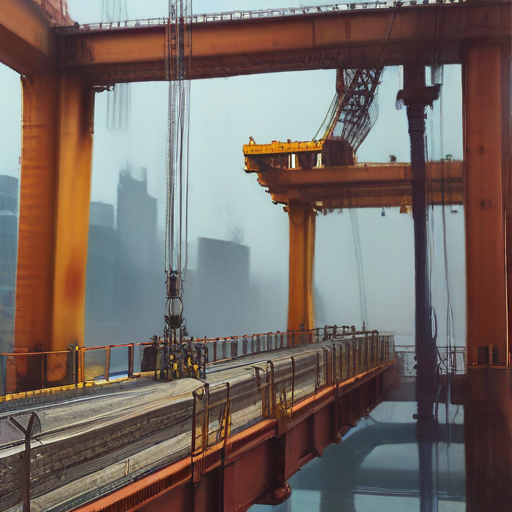
“bridge and gantry crane” Comparative Analysis
Bridge cranes and gantry cranes are essential lifting solutions used in various industries, offering distinct advantages based on the application. Here’s a comparative analysis of the two:
Structure and Design
– Bridge Cranes: Also known as overhead cranes, these systems consist of parallel runways with a traveling bridge spanning the gap. They are typically installed inside buildings, where the crane can move along the length and breadth of the facility.
– Gantry Cranes: These cranes have a bridge supported by two or more legs that move on fixed rails embedded in the floor. They can be used both indoors and outdoors, making them versatile for areas without overhead support structures.
Installation and Mobility
– Bridge Cranes: Installation involves fixed infrastructure, requiring significant initial setup costs and time. However, once installed, they offer high mobility within the coverage area, enabling efficient material handling in factories and warehouses.
– Gantry Cranes: Easier and less costly to install compared to bridge cranes, as they don’t require extensive building modifications. Gantry cranes can be easily moved within the facility or relocated to different job sites, providing flexibility for changing operational needs.
Load Capacity and Span
– Bridge Cranes: Generally offer higher load capacities and can span longer distances, making them suitable for heavy lifting in large facilities.
– Gantry Cranes: Typically lower in load capacity and span compared to bridge cranes. However, they can be customized for specific tasks and are beneficial for outdoor use or heavy lifting when a permanent structure is impractical.
Cost
– Bridge Cranes: Higher upfront costs due to structural requirements and installation complexities. Long-term, they provide cost efficiency through durable construction and lower maintenance needs.
– Gantry Cranes: Generally lower initial investment, with cost savings on structural modifications. They might incur higher maintenance if used in harsh outdoor environments.
In summary, bridge cranes are ideal for high-capacity, fixed indoor applications, while gantry cranes offer flexibility, ease of installation, and suitability for both indoor and outdoor operations. The choice between the two depends on specific operational demands, budget, and facility structure.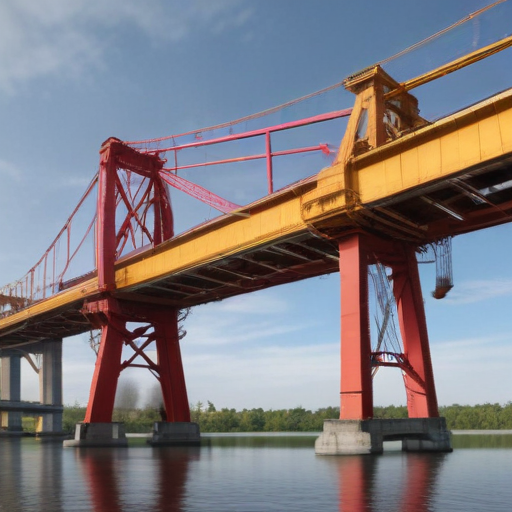
“bridge and gantry crane” Warranty and Support
Warranty and Support for Bridge and Gantry Cranes
Investing in a bridge or gantry crane demands confidence in both the equipment and the after-sales support. Our cranes come with a robust warranty and comprehensive support to ensure your operations run smoothly.
Warranty Coverage:
Our bridge and gantry cranes include a standard warranty period of 24 months from the date of installation or 30 months from the shipment date, whichever comes first. The warranty covers all mechanical and electrical components, safeguarding against defects in materials and workmanship. Any malfunctioning parts identified during this period will be repaired or replaced at no additional cost, provided the equipment has been operated according to the user manual and maintenance schedule.
Extended Warranty Options:
For added peace of mind, we offer extended warranty packages. These packages can extend the standard coverage by an additional 12, 24, or 36 months, allowing you to tailor the protection to your specific operational needs.
Technical Support:
Our commitment to our customers extends beyond just the warranty period. We offer around-the-clock technical support through our team of experienced engineers. Whether you require troubleshooting assistance, technical advice, or remote diagnostics, our support staff is available to help minimize downtime and ensure maximum productivity.
Preventive Maintenance:
To prolong the lifespan of your crane, we provide optional preventive maintenance plans. These plans include scheduled inspections, adjustments, lubrication, and component replacements as needed, ensuring your crane operates at peak efficiency. Subscribers to our preventive maintenance plans also benefit from priority service scheduling and discounted rates on parts and labor.
Training and Resources:
We offer comprehensive training programs for your staff, covering safe operation, routine maintenance, and emergency procedures. Additionally, detailed user manuals and maintenance guides are provided for easy reference.
Your investment in our bridge and gantry cranes is backed by a complete warranty and unparalleled support, assuring you of continuous, reliable performance and expert assistance whenever needed.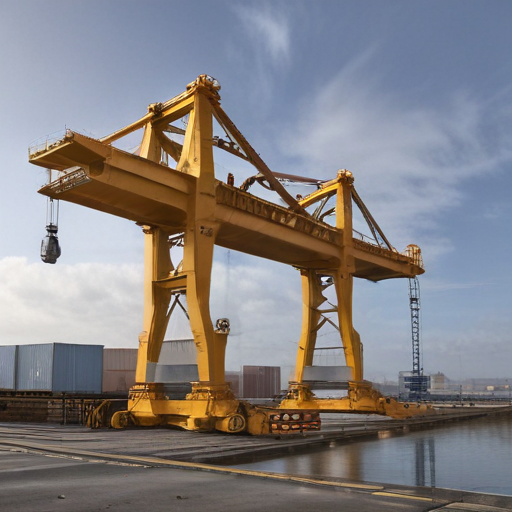
List “bridge and gantry crane” FAQ
Certainly! Here are some frequently asked questions (FAQ) related to bridge and gantry cranes:
1. What is a Bridge Crane?
– A bridge crane, also known as an overhead crane, consists of parallel runways with a traveling bridge spanning the gap. The hoist, which is mounted on the bridge, moves along it to lift and transport materials.
2. What is a Gantry Crane?
– A gantry crane is similar to a bridge crane but has a different support system. It is supported by legs that move on a track or rails, often used for outdoor applications or where overhead runways are not practical.
3. What Are the Main Components?
– Both cranes consist of a hoist, trolley, bridge, and controls. Gantry cranes also have support legs.
4. How is Load Capacity Determined?
– Load capacity is determined by design specifications and manufacturer guidelines. It’s essential to adhere to these to ensure safety and efficiency.
5. What Industries Use These Cranes?
– Common industries include manufacturing, shipping yards, automotive, construction, and warehousing.
6. How Do They Increase Efficiency?
– They facilitate the easy and safe movement of heavy loads, reducing the need for manual lifting and improving workflow efficiency.
7. What Safety Measures Should Be Taken?
– Regular maintenance, proper training for operators, adherence to load limits, and using safety features like emergency stop buttons.
8. Can They Be Customized?
– Yes, cranes can be customized to fit specific operational needs and spatial constraints.
9. What Are Common Maintenance Needs?
– Routine inspections, lubrication, checking electrical systems, and ensuring that structural components are in good condition.
10. How are They Controlled?
– They can be controlled manually via pendant controls, wireless remote controls, or even automated systems for increased precision.
11. What Are the Installation Requirements?
– Proper structural support, appropriate power supply, and compliance with local regulations and safety standards.
These FAQs provide an overview of bridge and gantry cranes, essential for anyone considering the use or purchase of these lifting systems.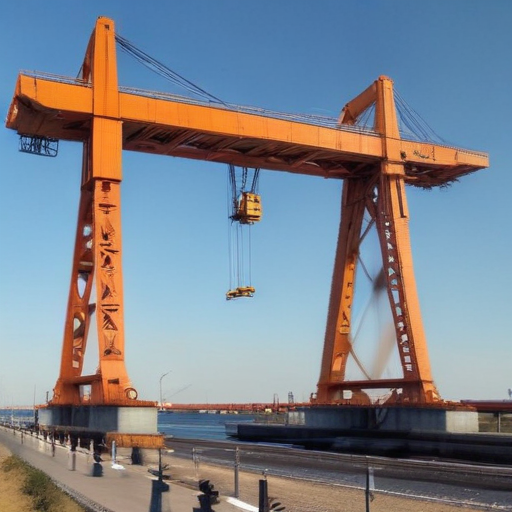
Top 10 FAQ with answer about bridge and gantry crane for Buyer Sourcing from China
Sure, here are the top 10 frequently asked questions (FAQ) about sourcing bridge and gantry cranes from China, along with concise answers:
1. What are the types of bridge and gantry cranes available?
– Answer: China offers a wide range, including single and double girder bridge cranes, single and double girder gantry cranes, portable gantry cranes, and heavy-duty gantry cranes.
2. How do I ensure the quality of cranes from Chinese manufacturers?
– Answer: Verify ISO certifications, check for compliance with international standards (e.g., CE, ANSI), request past project references, and consider conducting a factory audit or third-party inspection.
3. What details are essential for a precise quote?
– Answer: Provide load capacity, span length, lifting height, duty cycle, environmental conditions, and power supply specifications.
4. Can Chinese manufacturers customize cranes according to my requirements?
– Answer: Yes, most reputable manufacturers offer customization to meet specific project requirements, including tailored dimensions, special features, and unique design specifications.
5. What is the typical lead time for production and delivery?
– Answer: Lead time generally ranges from 30 to 60 days, depending on the complexity and customization level of the crane. Shipping can add additional time, typically 20-30 days.
6. Are there financing options available for purchasing cranes from China?
– Answer: Some manufacturers offer financing or payment plans, but options may vary. It’s advisable to negotiate terms directly with the supplier.
7. What types of support and after-sales service are provided?
– Answer: Services often include installation guidance, commissioning, training, and online or on-site technical support. Check the warranty terms and after-sales service policy of the manufacturer.
8. How do I handle import duties and regulations?
– Answer: Research your country’s import regulations and duties for heavy machinery. Chinese suppliers often assist with documentation, but partnering with a local customs broker can streamline the process.
9. What are the shipping and packaging standards for cranes?
– Answer: Cranes are typically disassembled and packed in secure, weather-resistant packaging. Sea-worthy wooden crates and reinforced steel frames are common to protect against damage.
10. How can I ensure timely and cost-effective shipping?

